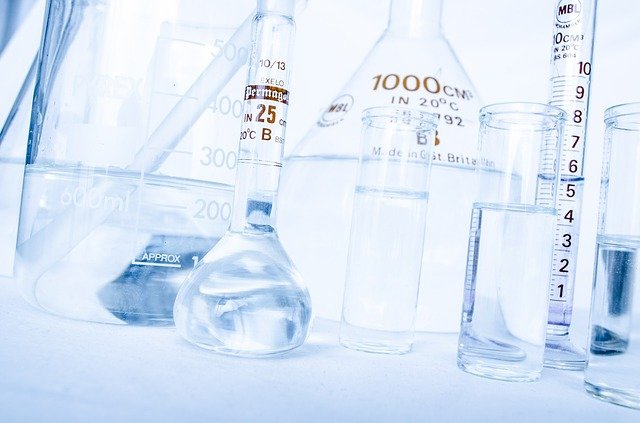Jessica was new on the job, and she didn’t know how to handle the ammonium. After a freak accident, the chemical began spilling. Soon there were fumes everywhere!
Before she knew it Jessica couldn’t breathe and closed her eyes for what felt like an instant. However, when she opened them everything was dark. She passed out from lack of oxygen!
Ammonium is an amazing chemical compound, but you have to know how to handle it. Whether you’re an employer working with ammonium, or a consumer using products containing it, knowledge is the key to safety.
What is ammonium chloride, and what do you need to know about it? Read on to find out!
What Is Ammonium Chloride?
First, what is ammonium chloride how does it behave? ammonium is a colorless crystalline. It can be a solid or exist as a yellowish-green powder. It’s odorless, and it has the molecular formula NH4Cl (1).
In solid form, ammonium is known to be very hygroscopic. What’s this mean? Hygroscopic means the ammonium will readily absorb water from the air. However, it’s also has a weak base, and contains both positively and negatively charged ions in solution.
Because it has a weak base, ammonium is very corrosive and can cause irritation to your skin, eyes, and respiratory tract. Since it’s naturally occurring, ammonium is widely available in many forms. It also occurs slightly differently with ammonia than it does with other common salts. For example, ammonium in water will not ionize to form both positive and negative ions.
However, when in air, it forms NH4Cl+ ions in solution. When the pH level of a solution containing an ammonium salt increases above its pKa value, the salt dissociates into its positively and negatively charged ions. For ammonium, this occurs at a pH value of 9.
Ammonium chloride is the most common substances sweat glands make, and it’s also the basis for a variety of household products.
Why Should You Care?
Now you know a bit about the chemistry and property of ammonium, but why would this matter to you? It all has to do with protecting the health of yourself and your family members. Several products contain ammonium as an ingredient.
For example tooth whiteners, deodorants, toilet bowl cleaners, leather treatments, cement, lacquers, dyes, and pesticides. Other products include household cleaning products, fertilizers, plastics, and rubber manufacturing chemicals, and urea-formaldehyde resins.
When a product contains ammonium as an ingredient, it will always appear in the list of ingredients. If you can’t find out if ammonium is in the product you’re using by looking at the label, call the company and ask.
Also, be sure to check the product itself for information. Although many companies are now including this information on their packaging, you may need to inspect the container a bit.
Is Ammonium Safe to Be Around?
Is it okay for products to contain ammonium? Yes, but! The U.S. Food and Drug Administration does not regulate this ingredient in these products. It’s just the opposite. The FDA allows ammonium to be used in a wide range of domestic products.
The problem is that no one can ensure that each product contains only the specified amount. As a result, companies have to be extra vigilant about ammonium chloride safety.
The U.S. Centers for Disease Control and Prevention (CDC) recommends that workers wear gloves, eye protection, and a lab coat when handling ammonium-based chemicals. You should use your best judgment when applying products that contain ammonium on your skin or hair.
You should also be aware of the other types of products you’re using with the compound. For instance, does your toothpaste contain ammonium? What about your laundry detergent?
Another popular use of ammonium has to do with plants. A lot of farmers enjoy using the compound in their fertilizers, to provide nitrogen. For instance, wheat and rice crops in Asia commonly use ammonium. Also, ammonium can be used to keep fungus off of plants. For instance, a common treatment for mold on houseplants is a spray made from ammonium.
How Much Ammonium Is Too Much?
Because of the variety of household products that contain ammonium, one can never be too sure how much is being absorbed by your body. Although there are many health issues related to over-exposure to this ingredient, there is not sufficient scientific evidence to determine safe levels.
Is Ammonia the Same as Ammonium?
Next, you probably realize that the name ammonium is similar to a common cleaning product, ammonia. Do these chemical compounds share more than a similar name? Yes! They are nearly identical.
They’re both derived from the elements nitrogen and hydrogen. Nonetheless, ammonia is a gas at room temperature while ammonium is a solid white crystal. You’ll find ammonia in cleaning products such as window cleaners or carpet cleaners. Just remember that Ammonia and ammonium are not the same and should not be confused.
Ammonium Sulfide
There’s another similarly named compound, ammonium sulfide. Ammonium sulfide is also different than ammonium. Ammonium sulfide is a white to light-yellow crystalline powder with a strong smell of camphor.
It will react with water to form ammonium hydroxide and hydrogen sulfide. It’s also used in the manufacturing of many items including glass, paper, rayon, dyes, pharmaceuticals, leather goods, rubber products, and detergents.
Staying Safe and Healthy
Now you know how to use ammonium chloride, safely. We all know that we should be using our best judgment when applying products to our skin or hair. But, it’s a lot easier said than done. However, staying safe isn’t impossible. It’s all about continuing to learn what goes into the products you’re using, so you can practice moderation.
We suggest you search online regularly and avoid products with any type of recall notice. Also, remember to thoroughly read the label of whatever type of product you’re using. For more insights, check out the rest of our site!




